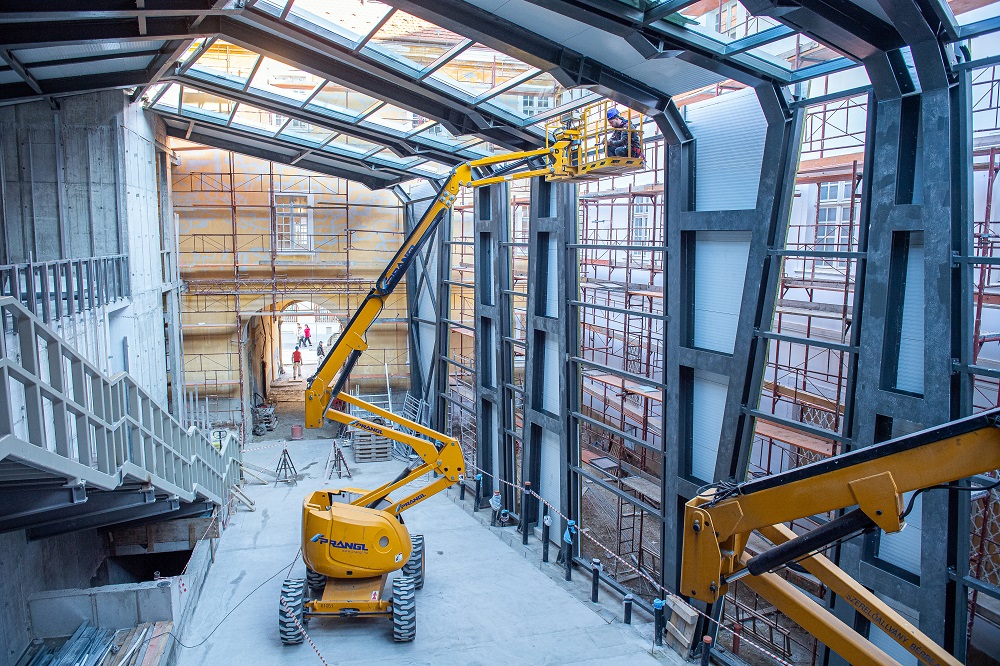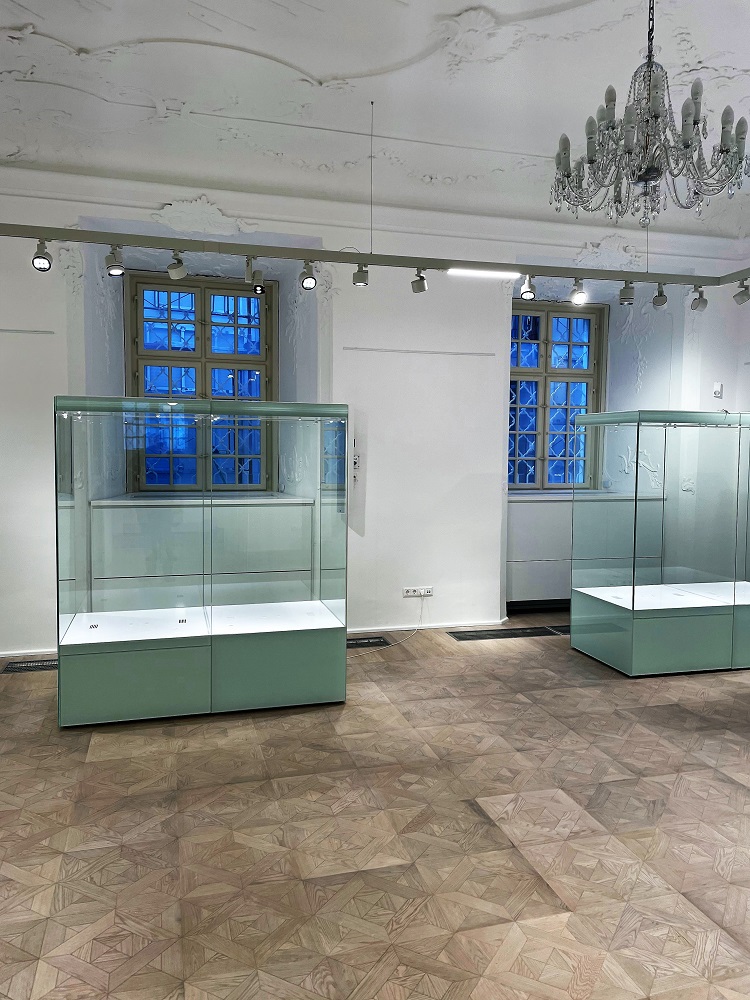THE ÁRPÁD ERA WAS NOT ABOUT MUSLIMS
The leaders of the institutions were interviewed by Magyar Nemzet about the large-scale exhibition in Székesfehérvár. - The exhibition entitled Kings and Saints - The Age of the Árpád dynasty is about the exceptional achievements of the House of Árpád, Gábor Horváth-Lugossy told our newspaper. The Director General of the Institute of Hungarian Research considers the political attacks by part of the press against a national and Christian exhibition to be unfortunate.
It would be better to wait for the exhibition, the institutions are preparing in team unity. According to László L. Simon, Director General of the Hungarian National Museum, the hiring of the artefacts is running smoothly, everything is prepared. Miklós Makoldi, archaeologist, also said that instead of the previous idea of presenting the late antique, Carolingian and Slavic-rooted Árpád culture, they would like to present the specifically Hungarian Christian culture of St Stephen's, which is supported by both the directors general and the director of Székesfehérvár.
"Nobody has seized anything." - begins Gábor Horváth-Lugossy, Director General of the Institute of Hungarian Research, - “What we are witnessing here is a dialogue among the heads of the institutions”.
According to the Director-General, during the organisation of the exhibition certain ideas emerged which were supported by the consortium partners. In fact, in the final phase of the organisation, the curatorial tasks were placed in one hand at the suggestion of the Director General of the Hungarian National Museum, in order to ensure efficient work. In the hands of Miklós Makoldi, who, in Croatia, in the presence of his Croatian colleagues, was able to excavate the remains of Mátyás Hunyadi's son and grandson, and who was involved in the excavation of the thousand-year-old abbey in the area of the headquarters and later the royal centre of the clan chief, Sámuel of Aba in Abasár. It is a fact that these excavations were Miklós Kásler's idea. There is nothing surprising in this, because as head of the ministry, he also has the task of managing the ministry's background institutions.
In Tázlar, together with Zsolt Gallina, Miklós Makoldi excavated one of the last Hungarian defensive lines of the Tatar invasion, where the locals were fighting to the death. For generations, Miklós Makoldi and his family have accumulated knowledge and insight that we need now. But it is important to stress that, even though he is the curator, there are still many other people working on the exhibition. The art loans are also underway and are proceeding excellently, but I could also mention the colleagues in Székesfehérvár who are building the whole exhibition. - said the Director General.

The attack in the opposition press suggests that the motives are more political and ideological than professional. It is sad that on the memorial day of the Don disaster, when we pay tribute to the memory of soldiers of the Royal Hungarian Army, who gave their lives for their country, were wounded, were sent to prison camps or disappeared without a trace, we had to deal with articles with such untrue content. I think that the fact that the content of the exhibition has been improved to a certain extent is an advantage. And the fact that the opposition press is circulating a piece of news without any substance is no longer surprising. The misleading news is essentially the same and is now boring. It is tiring to read, and I don't recommend it to anyone," says Gábor Horváth-Lugossy.
- The exhibition is not about the accompanying booklet in the first place, but about the exceptional achievements of the House of Árpád. There are many excellent researchers in the country who have been given few opportunities so far, despite their professional knowledge and expertise. They are delighted to share their knowledge in this volume. There is no need for a contingency plan, because the consortium partners who are implementing the exhibition are moving forward in the same way, they are organizing the exhibition," said the Director General of Institute of Hungarian Research.
THOUSAND YEARS OLD, HUNGARIAN
Instead of presenting the late antiquity-based, Carolingian and Slavic-rooted Árpád culture, I would like to focus on the specifically Hungarian Christian culture of St Stephen - Miklós Makoldi, archaeologist and director of the Research Centre for Archaeology of the Institute of Hungarian Research, told our newspaper about the large-scale exhibition entitled Kings and Saints - The Age of the Árpád dynasty. As mentioned above, the opposition media launched a press attack on Miklós Makoldi's appointment as new curator of the exhibition, pointing out that he had removed the presence of "Muslim, Jewish and nomadic" elements from the exhibition. However, the truth is much more complex.
The deadline for the exhibition is the 800th anniversary of the issuance of the Golden Bull, which is a fixed date, so they wanted to put the decision in the hands of a curator to drive the process. Rumours in the press had it that the exhibition was 90 per cent complete but according to Miklós Makoldi, at this stage of the exhibition, this is an exaggeration. It is not percentages that need to be talked about, but the tasks that lie ahead in the final stretch, e.g. finalising the exhibition scenario, the art loans and so on. Miklós Makoldi said that changes were proposed in three of the 17 rooms of the exhibition based on the above ideas. In fact, the main message of the exhibition 'Kings and Saints - The Age of the Árpád dynasty' is to present the House of Árpád and the development of the millennial Hungarian Christianity, as decided by the Hungarian government. According to Miklós Makoldi, the first and most impressive room, where the guests would have arrived, would have been largely about Carolingian Pannonia in the 9th century and would not have fitted in with the concept of the exhibition.
- I understand that they wanted to present the origins of Christianity in the Carpathian Basin, but I felt that the scale was excessive. My suggestion was accepted and the partner institutions agreed that this whole space should actually be dedicated to the Age of Conquest.
Since the exhibition is about the development of Christianity, I felt that too much attention was being paid to the history of non-Christian peoples, who made up a negligible proportion of the population of the Árpád period.
In the room on the Tatar invasion, they would have exhibited basically just treasure finds - we left that - but I think that distracts attention from the main point, which is the second foundation of the country and the fortress-building programme of Béla IV. Moreover, this room suggests to the tens of thousands of children- who would see that we had a lot of treasure during the Tartar invasion - that this was a very prosperous period for Hungary. We have emphasised the heroic defence and recovery of our ancestors. In addition, the towns and the settlement system are given greater emphasis, as a European-level system of fortresses and towns was constructed in our country at the time. The excavations at Bugac-Pétermonostor and Abasár are good examples of this, proving that from the 11th century onwards, settlements of the same urban level were established in Hungary as in Western Europe. We emphasise these rather than villages," said Miklós Makoldi.

- There was also a consensus among the consortium partners to include a historical overview of the history of the House of Árpád in the accompanying volume of studies, as well as of the Tatar invasion. If, as a result, some of the previously invited authors have withdrawn their papers, the researcher said, "I respect their decision and we have asked new authors to replace them. This will make for a more complete volume."
SWORD AND RELIC
- The former curators appointed by the museum, Ágnes Ritoók and Erika Simonyi, did an excellent job, I am very grateful to them. So the new curator appointed in December has not started from scratch, but is merely completing and refining the almost finished exhibition concept based on his own concept. The exhibition will largely be based on the collection of the Hungarian National Museum and, of course, we will be borrowing a lot of foreign artworks; this process will be handled by our museum, as we will be borrowing from partners with whom the National Museum has a long professional relationship. The loaning of the artefacts is going smoothly, everything is prepared," said László L. Simon in response to our inquiry.
He also pointed out that they also receive objects from many Hungarian institutions and almost all Hungarian museums are involved in this project.
Special artefacts from abroad related to the Árpád era will be brought to the Székesfehérvár exhibition, such as the reliquary of Saint Stephen (Aachen), the sword of Saint Stephen (Prague), the Salzburg silver cross (Salzburg), income census from the period of Béla III when the Hungarian ruler was one of the richest crowned heads in Europe (Paris), pieces of an Árpád-era gold diadem (Bucharest) and many others.
- In addition to the exhibition itself, it is also worth mentioning that in the framework of the Árpád House project, an extremely important investment has been realised in Székesfehérvár: the city's historic museum building, the former Cistercian monastery, has been completely renovated. A new entrance and reception area will be added to the emblematic building, which will be equipped with modern display cases and mechanical solutions that will allow for the storage and display of first-class artefacts," said László L. Simon.
-
The exhibition is organized by the Hungarian National Museum, the Institute of Hungarian Research and the King St. Stephen Museum in Székesfehérvár.
The original article is available on Magyar Nemzet.
Cover image: The Coronation of Saint Stephen, statue of Miklós Melocco in Esztergom (Photo: MTI/ Balázs Mohai